By Joshua van Dereck
At the beginning of 1861, Missouri was in turmoil. A slave state since its inception in 1820, Missouri had grown increasingly tied to urban industry. Cotton and tobacco had given way to factories, and transplanted northerners and foreign immigrants were flocking to the cities. The election of Republican Party candidate Abraham Lincoln as president the previous November underscored the potential for armed conflict between northern and southern states. As a vital border state, Missouri was a prize much sought by both sides.
St. Louis: a Divided State
Governor Claiborne Jackson was among the old guard who felt that Missouri’s destiny lay with the South. Dismayed when a state convention voted to maintain Missouri’s place in the Union, Jackson nevertheless decreed that Missouri would not furnish a single man for what he termed the “unholy crusade” of war against the South. Missourians wanted no part of civil war, and they made their loyalties known by volunteering heavily for service in home guard units, resolving to fight against aggression from either North or South while walking the delicate tightrope of neutrality.
In St. Louis, however, belligerent partisans threatened the balance. St. Louis was Missouri’s largest city, and as a prominent trade center it was home to some of the most radical factions. The German immigrant community, 50,000 strong, was staunchly Unionist. Having come to America for the promise of suffrage and personal liberty, Germans were eager to uphold the integrity of the national trust. By early 1861, German fellowship societies throughout St. Louis had begun organizing makeshift military companies and drilling under the instruction of veterans of the Prussian Army. Concurrently, groups of those who favored the South, drawn heavily from genteel old-guard families, formed Minute Men companies and also began drilling, sometimes only blocks away from their would-be adversaries.
Securing the Arsenal
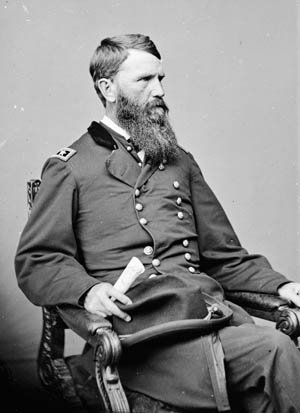
As tensions grew, the rival factions began to raise concerns about the safety of the city’s massive arsenal. St. Louis contained the largest arsenal of any slave state, and its tiny garrison was woefully insufficient for its defense. Alarmed by the situation, Republican Congressman-elect Frank Blair, brother to President Lincoln’s newly appointed postmaster general, telegraphed Washington and urged the immediate reinforcement of the arsenal. Notorious for his truculent outspokenness, Blair resorted to irregular measures to augment the arsenal’s defenses. Preempting Jackson’s refusal to enlist troops for the Federal government, Blair began working covertly to arm the volunteer German companies, initiating a subscription drive for musket funds when he was unable to obtain arms from the arsenal itself.
Although the Army’s Western Department commander, Brig. Gen. William Harney, shared Blair’s concerns, he favored a more cautious approach, hoping to maintain peace in St. Louis through moderation. Instead of mustering the German volunteers, he brought in a modest reinforcement of U.S. Army regulars, drawn from nearby garrisons. Among the reinforcing contingent was a volatile New England-born captain, Nathaniel Lyon, who soon would prove the undoing of all attempts at conciliation.
Lyon’s Defense
Lyon, a native of Connecticut, harbored a deep-rooted hatred of secession, and his reputation for insubordination preceded him. Reaching St. Louis at the head of his company, he proved an immediate headache for Harney, insisting upon 24-hour perimeter patrols around the arsenal and vehemently urging the construction of firing platforms along the arsenal walls so that marksmen and artillerists could rake all approaches to the building—regardless of potential civilian casualties. Making matters worse, Lyon and Blair forged an instant alliance, with Lyon promising to arm and muster any and all Union volunteers regardless of Missouri state directives. He urged Blair to arrange Harney’s removal from command.
Lyon was hardly an iconic hero. An impulsive cigar smoker who loved candy and sported a mouth full of false teeth, he was a martinet of the first order who believed that he existed as a divine instrument of justice. Devoted to draconian discipline within his command, he had developed a reputation in the Regular Army for administering punishments that bordered on torture and sadism. He was even court-martialed for illegal, arbitrary, and unmilitary conduct in the violent disciplining of a private.
Harney did what he could to control the situation through formal channels, but he had no authority over Blair, and time was against him. With rumors afoot of secessionist activity in the Missouri countryside, Blair grew ever more determined to see to it that the German volunteers were formally mustered into Federal service. On April 21, Blair tapped powerful contacts in Washington and Pennsylvania, urging Harney’s removal in the interest of security. In response, directives arrived removing Harney and elevating Lyon to department command. German volunteers immediately elected Lyon a brigadier general, and he spent the rest of the week fortifying the arsenal and mustering recruits into the Army, overriding the express wishes of the state government.
Bloodshed in St. Louis: the Camp Jackson Affair
Lyon’s ascension provoked fear and anger in St. Louis, and the city erupted with violent disturbances. In the capital at Jefferson City, Governor Jackson, who had already commenced secret negotiations with Confederate President Jefferson Davis, called out the state militia on the pretense of protecting Missouri from outside agitators. Militiamen began converging on camps throughout the state.
St. Louis became home to Camp Jackson (named for the governor), a base that attracted some 900 volunteers whose ranks included many of the pro-southern Minute Men. Their presence deeply incensed Lyon. Emboldened by the considerable growth of his arsenal force (it was now almost 8,000 strong), he determined to capture the camp, and he scouted it himself while disguised as an old woman. Returning to the arsenal, Lyon continued to make preparations to fight, but he soon received an alarming surprise. Harney, who had appealed to General-in-Chief Winfield Scott in Washington for reinstatement, was due to return in two days to resume command. If Lyon was to act, he had no time to lose.
On the morning of May 10, Lyon sent forth his newly mustered soldiers from the arsenal in three separate columns to converge on Camp Jackson. Advancing through the streets of St. Louis, they attracted throngs of curious onlookers as well as gangs of armed ruffians who followed them, hoping for a chance to aid the militiamen. Lyon’s columns deployed along three sides of Camp Jackson, bewildering the outnumbered militiamen with a cool show of might. When all was ready, Lyon sent a messenger to deliver a strict ultimatum he had written the night before. It accused the militia members of hostility to the Federal government and demanded their immediate surrender. The militia commander protested that the demand was illegal and unconstitutional, but he agreed to comply. Having thus secured his aim, Lyon decided to make an example of his prisoners, ordering them to be marched under guard through the city to the arsenal.
No sooner had his men begun leading the march, however, than angry crowds commenced heckling them. Jeers and insults rent the air; people spat at the Union volunteers. The fury of the crowd intensified, and soon they began throwing rocks. Finally, one civilian fired a gun. Other shots broke out, and a bullet mortally wounded a Union captain. This was too much for the volunteers, who angrily fired into the crowd. Pandemonium reigned for several minutes before Lyon was able to regain control of the situation and hurry the column back to the arsenal. By then, the “Camp Jackson Affair” had done lasting damage. Twenty-eight civilians, two Union soldiers, and three militiamen lay dead. Seventy- five others were wounded, and terror gripped St. Louis. “The Black Dutch are killing them all!” one observer cried. “They are shooting women and children in cold blood!”
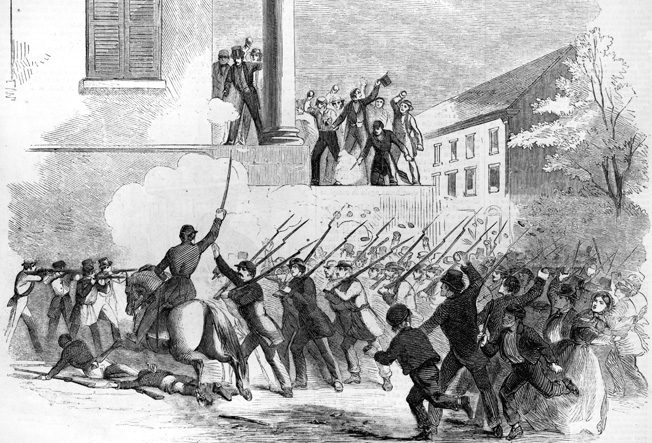
“Suppress Rebellion and Repel Invasion”
In the capital, Jackson called an emergency session of the General Assembly to discuss a bill granting him unprecedented powers to “suppress rebellion and repel invasion.” It was a bill the legislators had previously debated for weeks. Now they passed it in 15 minutes. Jackson quickly appointed popular Mexican War veteran Sterling Price commander of the Missouri State Guard and commenced preparations for all-out war.
In St. Louis, Harney returned on May 11 and found the city a maelstrom of unrest and violence. Unable to cashier Lyon, he instead took measures to remove the German volunteers from the arsenal and met with Price on May 20 to iron out what was essentially a nonaggression pact. Jackson and Price wanted time to organize, and Harney still hoped for peace, but the time for conciliation had passed. On that same day, Blair received discretionary authority from Washington to remove Harney again in favor of Lyon if he deemed it necessary. Blair made it official six days later, prompted in large measure by Harney’s continuing reluctance to arm and train the city’s German volunteers.
On June 11, Jackson and Price traveled to St. Louis under guarantee of safe passage to meet with Lyon and determine whether he would honor Harney’s previous terms. Blair accompanied Lyon, and the meeting was long and tense. After four hours of unsettling debate, Lyon rose from his chair, snuffed out his cigar, and declared: “Far better that the blood of every man, woman, and child within the limits of the State should flow, than that she should defy the Federal government. This means war.” He gave the visitors an hour to leave his camp.
Jackson and Price left for Jefferson City that night, and Jackson issued a proclamation calling on Missourians to repel the Federal “invasion,” reminding them that they were “under no obligations to obey the unconstitutional edicts of the military despotism at Washington, nor submit to the infamous and degrading sway of its wicked minions in Missouri.”
A Rash Campaign
Such defiant rhetoric was no substitute for military preparation, and Lyon was already several steps ahead. Refusing to temper his aggression to address supply shortages, Lyon moved to execute a highly ambitious plan of campaign. To crush resistance, he envisioned a two-pronged pincer movement. He would lead half his force due west up the Missouri River to seize Jefferson City, securing vital communications and dispersing Price’s State Guard. A second column, under the command of popular German Colonel Franz Sigel, would move southwest to the railhead at Rolla and then advance across the state to Springfield, where it would act as the anvil against which Lyon would hammer the fleeing state troops. If everything went as planned, Federal forces would command virtually all of Missouri’s vital river and railroad network.
On June 13, Lyon’s column departed St. Louis aboard four commandeered civilian steamers, while Sigel’s forces left via railroad. Two days later, Lyon arrived at Jefferson City, only to find that Jackson and Price had already fled. Jackson had not gone far, however, and Lyon caught up with him on the 17th near Boonville and badly routed a scratch force of State Guard in a nearly bloodless skirmish that northern papers hailed as a brilliant victory. Meanwhile, Jackson and Price gathered as many men as they could and began a wholesale retreat for the Arkansas border, where they hoped to enlist Confederate military aid.
Lyon’s campaign quickly bogged down for want of supplies. A steady pattern of requisitions had vexed his quartermaster in St. Louis, and the officer retaliated by canceling many of the requests. Reduced to scrounging for wagons and teamsters, and chafing under the discomfiture of a sudden deluge of rain, Lyon waited impatiently, but the delay afforded time for reinforcements to arrive. En route was the newly mustered 1st Iowa Regiment, as well as a considerable force of Kansans and Army regulars under the command of Major Samuel Sturgis. By the time these forces arrived on July 7, Lyon was in motion once more, aided by a motley jumble of expropriated vehicles. Events were accelerating.
In Arkansas, Confederate Brig. Gen. Benjamin McCulloch had watched Lyon’s progress with apprehension. A transplanted Texan, McCulloch was something of a legend—friend to David Crockett, veteran of two wars, California gold prospector, congressional representative, Indian fighter, and now district commander for the Confederacy. Assigned to protect the northern border of Indian Territory, McCulloch believed that the presence of Price’s forces in Missouri made his job considerably easier, and he decided to rescue them from impending defeat. Concentrating his mixed command of Texans, Arkansans, and Louisianans near the border, McCulloch rode ahead to confer with Price, and on July 4 he initiated the first Confederate invasion of the United States.
The next day, while McCulloch’s men were pressing into Missouri, Sigel’s wing of the Federal pincer teetered near disaster. Having reached Springfield on June 24 well in advance of Lyon, Sigel had determined to press forward alone and engage the retreating State Guard at Carthage. Sigel had about 1,000 soldiers on hand for the job, while Jackson commanded some 4,000 men. Price was still organizing farther to the south.
Sigel was aware of the disparity between forces, and he certainly had sufficient experience to evaluate the situation. A former German minister of war, Sigel had commanded armies in multiple battles during the German revolution of 1848. On July 5, Sigel rashly attacked Jackson’s force and then withdrew. Casualties were low, a little more than 100 in all, but the Missouri State Guard reveled in their apparent success. When Lyon heard of the clash, he initiated a forced march to rescue Sigel from himself.
Lyon had to abandon much of his baggage train crossing the Grand River, and he had his men strip down even further as they hurried southward through the night, ultimately covering more than 50 miles in 30 hours to reach Springfield. Upon arriving, Lyon found that Sigel had extricated himself in good order, but now the Federal soldiers in both columns were exhausted, their uniforms reduced to tatters. Demoralized and fatigued, Lyon despaired. “The want of supplies has crippled me,” he mourned. “Everything seems to combine against me.”
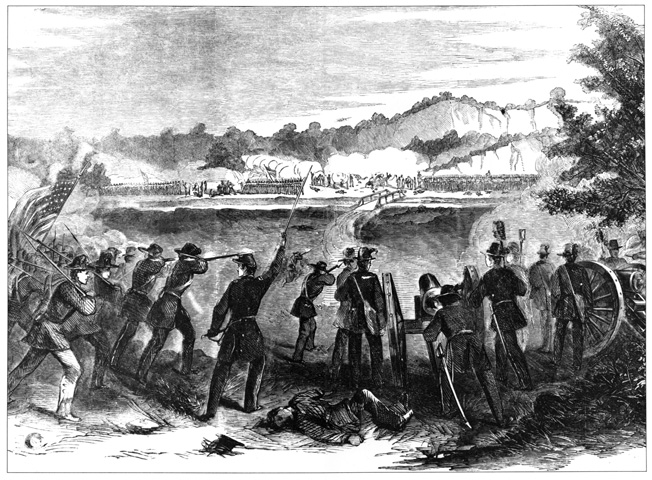
A Lack of Supplies
McCulloch and Price, however, were not combining. Learning that Sigel had retreated and feeling disgusted over the lack of discipline in the ranks of the Missouri Guard, McCulloch aborted his invasion and withdrew to Arkansas to await developments. In the meantime, while Jackson strove to enlist support from Richmond, Price went into bivouac to build up his command. The Missouri State Guard now numbered some 7,000 volunteers, including 2,000 who were unarmed. Members were bedecked in all manner of attire, and those who had weapons mostly carried shotguns and squirrel rifles. Struggling through the rudiments of drill, they spent their idle hours sewing uniforms, carving slugs for artillery canister, and casting bullets. Food was perhaps their most pressing concern. In the absence of a rail or river base, the Guards stripped the surrounding countryside clean of food. Soon they would have to either advance or retreat to find more.
In Springfield, Lyon was dealing with the same dilemma. Food had grown scarce due to the haphazard supply situation, typhoid and diarrhea ravaged the ranks, and discipline was breaking down. Enlistments, many of which had been for three months, were running out, and before the end of July 2,000 men left the ranks and decamped for St. Louis. Blair’s arrival in Washington had coincided with the appointment of a new department commander, Maj. Gen. John C. Frémont, who was supposed to operate out of St. Louis and direct supplies and reinforcements to
the front. Lyon bombarded him with a flurry of demands, but Frémont proved notably unresponsive. “If he fights,” the new department commander said of Lyon, “he will do it upon his own responsibility.”
The Second Invasion of Missouri Begins
From his vantage point in St. Louis, it was clear to Frémont that Lyon’s campaign had already succeeded. The heart of Missouri was securely in Federal control, and Price’s recruiting efforts had been quashed. If Lyon was too short of supplies and soldiers to hold on at Springfield, Frémont advised him to make a strategic withdrawal to Rolla and repair his command for future service. It was a sensible suggestion, but one that Lyon could not bring himself to follow. Instead, the truculent New Englander determined to strike forward once more, regardless of conditions. On the morning of August 1, he marched his combined command of fewer than 6,000 men through the blistering heat in search of battle.
Price and McCulloch had combined forces again by then, initiating plans for a second invasion of Missouri. Overcoming his distrust of the State Guard, McCulloch agreed to assume command of the offensive—provided that Price leave his 2,000 unarmed men and camp followers a day’s march to the rear. It was a condition that Price quickly accepted and just as quickly ignored. Advancing on August 1, McCulloch’s command contained an aggregate of over 10,000 muskets, almost twice the number in Lyon’s ranks. And while the State Guard troops were of somewhat dubious quality, several of McCulloch’s units had already developed fierce identities. Colonel Louis Hébert’s 3rd Louisiana Regiment proudly bore aloft a blue silk flag with the emblazoned inscription, “Southern Rights Inviolate,” and Arkansas volunteers boasted several units with unique and dashing uniforms, including the Centerpoint Rifles who wore dark blue coats and checkered shirts with red stripes.
The next day, the rival armies came into contact amid choking dust and 110-degree temperatures. The result was an abortive skirmish in which a State Guard unit broke badly under fire and fled pell-mell for the rear. But Lyon did not press home his advantage. Overwhelmed by fatigue, the New Englander was steadily succumbing to the stress of command. When probes failed to stir up a battle the following day, he called his officers together for a council of war. It was the first time Lyon had asked for advice in the entire campaign. Once convened, the officers voiced concern over the supply situation, and Lyon gloomily ordered a withdrawal to Springfield.
Now the initiative passed to McCulloch, who was not eager to seize it. Thoroughly vexed over the performance of the State Guard, he ordered a pursuit only after much squabbling with Price. Then, after exhausting his men with forced marches in the blazing sun, he lost his resolve altogether, and ordered his units into bivouac at Wilson’s Creek, 10 miles south of Springfield. For Price, it was becoming irritatingly apparent that the famous Texan was afraid to fight.
Attack is the Only Retreat
Meanwhile, in Springfield, Lyon was steadily losing his grasp on events. Conferring with subordinates regularly, he waffled between zealous convictions that he should defend his position to the last or strike out and attack. The arrival of a long-overdue wagon train on August 6 served as momentary inspiration, and the New Englander impulsively decided to launch a surprise offensive that very night. Stirring the men from their camps, he sent them to jump-off positions, but then he somehow lost track of time. As 10 PM gave way to 3 AM, a bewildered Lyon suddenly realized that the night was too far gone and canceled the attack.
For the men in the ranks, the abortive escapade was deeply confusing, and it did not help their confidence that Lyon persisted in keeping them under arms all day on August 7 in the sweltering heat. Exhausted and irritated over what seemed unnecessary exertions, the men watched for rumored enemy advances from all directions, none of which materialized. That night, Lyon convened his officers again to debate how to proceed. Most thought a withdrawal to Rolla the best option, but Brig. Gen. Thomas Sweeny, a one-armed Irish regular, delivered an impassioned diatribe in opposition. “Let us eat the last bit of mule flesh and fire the last cartridge before we think of retreat!” he urged. Newly persuaded, Lyon presented a new line of reasoning. Withdrawing without battle would “run the risk of having to fight every inch along [the] line of retreat,” he warned; an attack was necessary to get away safely.
Inspired by this convoluted logic, Sigel proposed an audacious plan to divide the army into two columns and attack the enemy camp from front and rear at once. It was a plan that violated basic military logic, as it called for the division of a smaller force in the face of a larger enemy. All of the assembled officers thought the plan preposterous, and much to their relief Lyon rejected it. Instead, he told them to prepare for an advance the following evening, preparatory to a combined frontal attack at dawn on the 10th. On the morning of August 9, however, Sigel paid his commander a special visit and somehow persuaded Lyon to reconsider. Preposterous or not, Sigel’s plan would be put to the test.
As the men prepared for the night march on August 9, Lyon rode among the ranks offering bland words of encouragement. “Men, we are going to have a fight,” he said. “Don’t get scared; it’s no part of a soldier’s duty to get scared.” Most were unimpressed. “How is a man to help being skeered when he is skeered?” one queried. At 5 PM, the two columns swung into motion: Sigel with his brigade of 1,100 Germans and Lyon at the head of the rest of the 4,000 men in the army. The moon was a crescent, and the Federal march was uneventful.
The Battle of Wilson’s Creek Begins
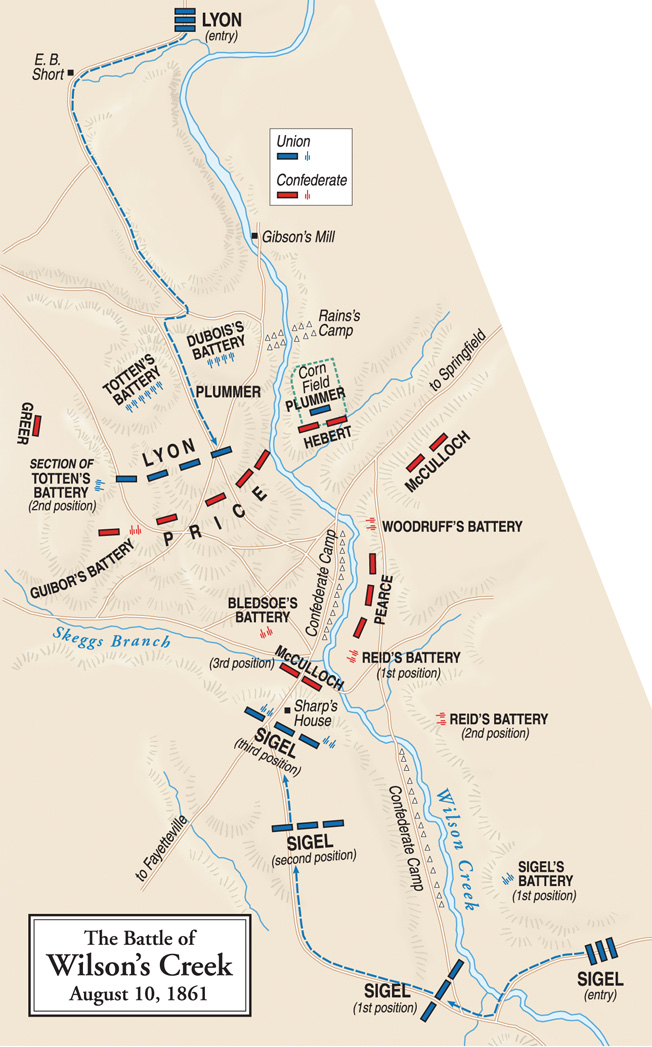
At this juncture, although the attack plan was risky and the odds unpromising, Lyon had reason to be hopeful. Perhaps as many as a quarter of the men in his column were regulars, and, although many of the units were armed with antiquated muskets, their arms were still superior to the ad hoc weapons of Price’s State Guard. Moreover, the reinforcing regiments from Kansas and Iowa were rugged and feisty. Colonel George Deitzler’s 1st Kansas had a company known as the “Stubs,” so called because so many of its members were short. The Stubs had formed in the antebellum years to defend “Bleeding Kansas” against Missouri border ruffians and had earned a reputation for ferocity. The men of the 1st Iowa brought two canine mascots with them to the battle, and, although their enlistments had expired during the stay in Springfield, the men had voted to stay and fight. Finally, Lyon had another advantage he did not even know about—McCulloch’s camp had not posted a picket line.
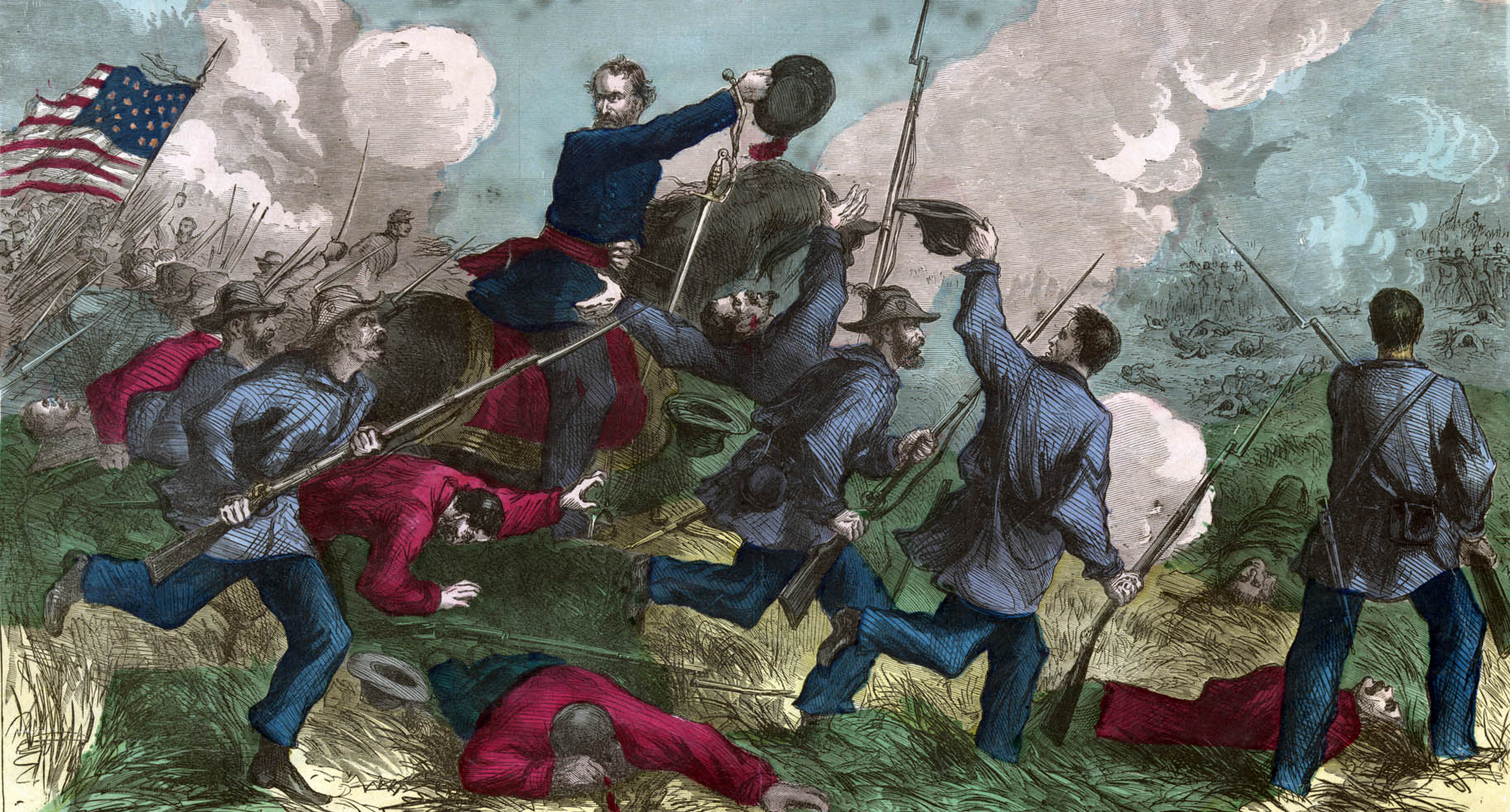
Price had lost his temper on the 9th and delivered an ultimatum to McCulloch. If the Texan would not attack, Price would take the State Guard and advance on his own. In response, McCulloch had called together his officers for a vote and found that his was the minority voice of dissent. Reluctantly submitting, the Texan had ordered a night march to prepare for a dawn assault on Springfield on the morning of August 10. After more than a week of false starts and procrastination, Lyon and McCulloch planned to deliver simultaneous strikes. The weather turned stormy just as McCulloch prepared to leave. Anxious to avoid getting the men’s powder wet, the Texan postponed the march until dawn, but he neglected to send pickets out. The army passed the night unguarded.
McCulloch’s campsite lay on both sides of a shallow stream called Wilson Creek. (After-battle reports incorrectly referenced the body of water as Wilson’s Creek, and this became the name of the battle.) The creek ran roughly north-south and was crossed by the Wire Road, which led northeast to Springfield. Approaching the position at 4 AM, Lyon chose to leave the road, cross the creek, and attack from due north, hopeful that this would enhance the element of surprise. The trouble was that the landscape was strewn with roving foragers from Price’s State Guard, whose undisciplined failure to stay in camp ironically proved helpful. While advancing, Lyon’s skirmishers encountered some of these wandering men and put them to flight, but in their retreat the foragers managed to sound the alarm.
“Bloody Hill”
Stunned into action, one of Price’s cavalry regiments hastily deployed on a hill just north of the camps. The first casualties of the battle occurred while Lyon’s advance guard stormed the hill, soon to be rechristened “Bloody Hill.” Deitzler’s 1st Kansas, including the Stubs, joined the all-German 1st Missouri Regiment in leading the charge. The men moved so cautiously that they did not reach the crest until 5:30 AM. At that point, buoyed by success, Lyon proudly proclaimed to his chief of staff, “In less than an hour the enemy will wish they were a thousand miles away.”
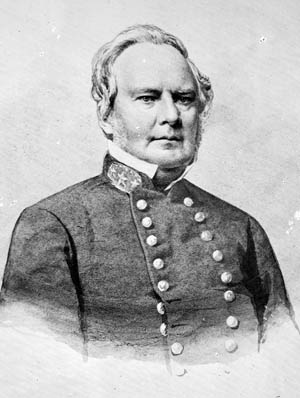
McCulloch might just as well have been that far away, for he was completely in the dark when the opening shots rang out. The landscape around Wilson Creek gave rise to an “acoustic shadow,” a peculiar deadening phenomenon that can arise when topographical features or localized variances in air density block otherwise discernible sound. While the battle raged, McCulloch breakfasted placidly with Price, enjoying cornbread, beef, and coffee. When couriers reached him to announce the commencement of hostilities, the Texan laughed. Still, he sent some cavalry to investigate, and when further reports of fighting trickled in, he decided that it was time to adjourn his meal.
By then, Lyon’s advance had begun to bog down, not because of the threat posed by Price’s cavalry, which the Federals had brushed away, but because of the unnerving effect of an artillery battery that took Lyon completely by surprise when he pushed to the crest of Bloody Hill. The battery was located at the edge of a cornfield on the far side of Wilson Creek. Its men had been in the midst of preparing breakfast when they observed the action opening and decided to pitch in, delivering a blast of case shot and shell against the Federal flank. Lyon halted and brought up a battery of his own, and a strangely personal duel ensued.
Commanding Lyon’s battery was Captain James Totten, a Pennsylvania-born regular who had served in Arkansas before the war. Venerated as a local hero by the citizens of Little Rock, Totten had received a sword as a token of esteem from the Arkansas ladies and then had horrified them by unsheathing it in defense of the Union. Engaging him was the Pulaski Light Battery, formerly the Totten Light Battery, whose gunners Totten had personally trained while stationed in Arkansas. Evidently his training was not comprehensive, as neither battery fired with great accuracy and casualties were low in both units.
Lyon, however, was sufficiently perturbed to halt his advance and begin building a defensive position on the crest of Bloody Hill. This had the effect of surrendering the initiative to the enemy at a time when Price and McCulloch were still trying to discern what was happening. Worse yet, Lyon formed his line on the peak of the hill instead of on the military crest or shoulder of the hill, which meant that his infantry could not see or shoot at anyone forming along the base. For the time being, the implications of these errors were yet to be realized. Lyon, pleased with his progress, listened with encouragement as the first sounds of artillery erupted from the south, signaling the opening of Sigel’s offensive.
“A Perfect Hurricane of Bullets”
The German colonel’s attack was actually faring better than he or Lyon could have foreseen. Arriving on schedule, Sigel discovered, much as Lyon had, that the enemy camps were unguarded. Texas, Arkansas, and Missouri soldiers were sleeping or milling about in a stubble field, completely ignorant of the engagement that had opened scarcely a mile away—acoustic shadow was doing double duty for the Federals this day. Sigel promptly ordered up a battery of artillery and opened fire on the enemy camp. The result was instant pandemonium. Stunned Confederates dissolved into a wild mob, spreading panic among the thousands of unarmed men and camp followers whom Price had insisted upon bringing along. Delighted with his progress, Sigel advanced his infantry into the stubble field, gathering more than 100 prisoners with minimal effort.
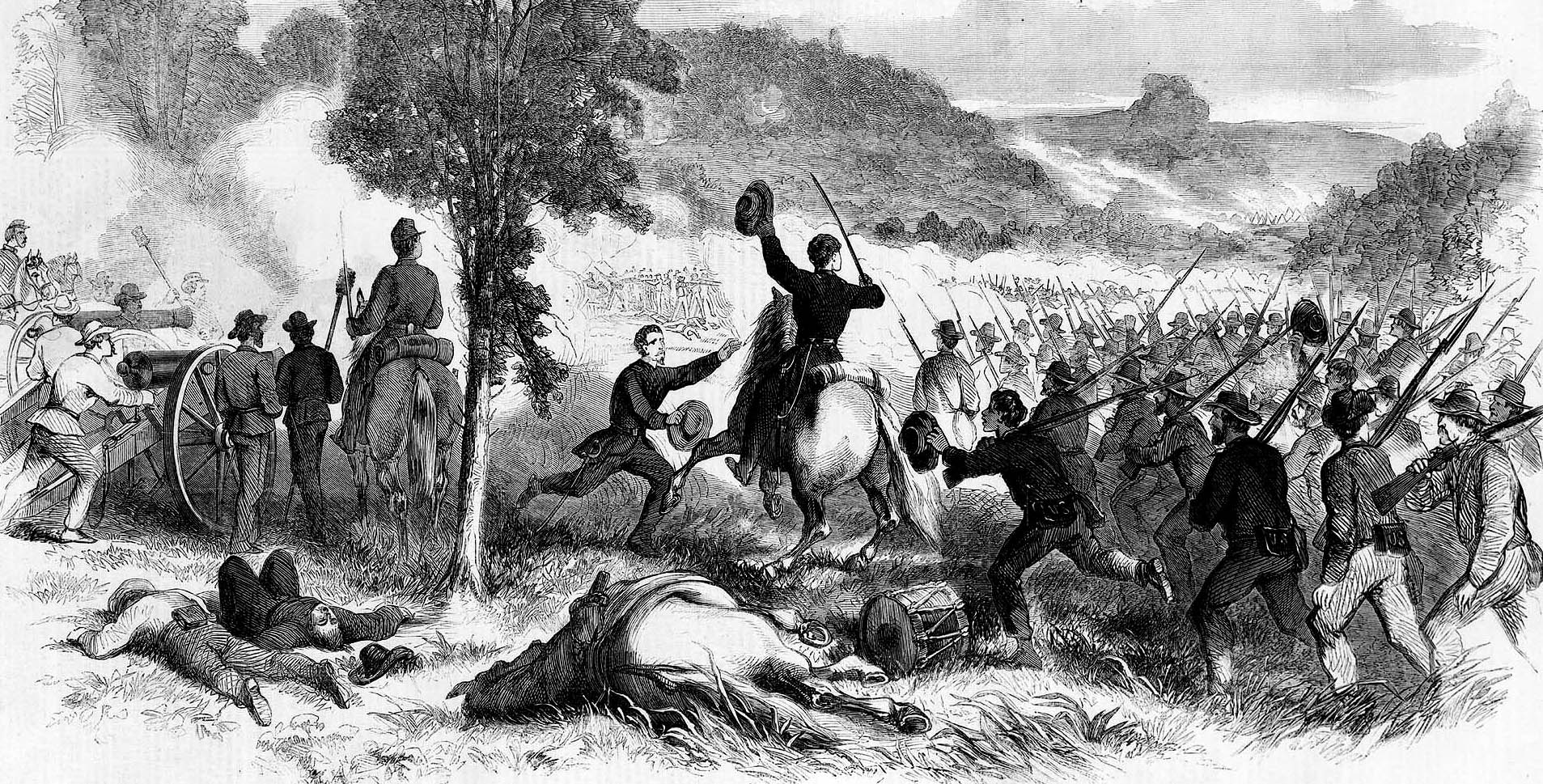
In the meantime, Lyon was actively striving to advance once more. Having amassed some 2,800 men on the hill, he finally launched a probe with the 1st Missouri and 1st Kansas Regiments. High prairie grass, thickets, and scrub oaks undermined coordination, and the regiments essentially blundered into Price’s still- forming line at the base of the hill. The 1st Kansas went in with a cheer, trading close- range volleys with Price’s men. The commander of the 1st Missouri Regiment, Lt. Col. George L. Andrews, was preparing to charge when he noticed a State Guard unit maneuvering around his flank. The maneuver was accidental, as Price’s regiments were still coming into line chaotically due to their poor discipline, but the two Federal units suddenly stopped advancing and braced themselves for an attack. Price quickly complied. A protracted and sanguinary struggle began on the side of the hill, sometimes at distances as short as 30 yards.
It was “a perfect hurricane of bullets,” one participant observed. Casualties accumulated rapidly, while officers walked the lines shouting words of assurance. One major in the 1st Kansas even promised his men that anyone killed in the line of duty would go directly to heaven. The fighting raged inconclusively until nearly 7:30 AM, at which point the strength of Price’s growing line forced Lyon’s regiments into retreat. Lyon quickly ordered the 2nd Kansas Regiment to brace the retreating line. “How the blood leaped in our veins then,” one of the Kansans recalled. The countercharge was short, fierce, and successful, and Price’s Guard units broke off their attack to regroup at the base of the hill.
Sigel’s Disastrous Mistakes
By now it was 8 AM. Lyon’s offensive had essentially spent itself, and whatever potential for victory remained squarely with Sigel. McCulloch had arrived on Sigel’s front, and he was striving to make sense of the German’s curious movements. After scattering thousands of men about the countryside, Sigel had pushed through the stubble field and deployed his artillery in a farmyard near the edge of a plateau, still some distance from Bloody Hill and the rest of the battle. Then, seemingly content with his accomplishments, the German went about gathering prisoners and shelling distant units of the State Guard. He made no further attempt to reach Lyon and did not even deploy his infantry to defend against a counterattack. Instead, he left the men in columns on the road. Still more absurd, he made little effort to screen the edge of the plateau, which provided ideal cover for a counterattacking force. It was a situation that virtually embraced disaster with open arms, and McCulloch was not long in appreciating the fact.; After forming his assessment, the Texan quickly rode off to find men with whom to make it a reality. Neglecting an available reserve of Arkansans, McCulloch summoned several companies of Hébert’s 3rd Louisiana. “Come, my brave lads,” the general called. “I have a battery for you to charge, and the day is ours!” The Louisianans followed dutifully, and McCulloch deployed them just below the edge of the plateau.
Sigel had seen the approaching column, but he thought it might be the vanguard of Lyon’s forces. To make sure, he sent a solitary soldier down the road to challenge them. Approaching to within a few feet, the soldier found himself face to face with McCulloch. “What force is this?” McCulloch demanded. “Sigel’s brigade,” the soldier replied, raising his musket to fire. Luckily for McCulloch, one of the Louisianan’s shot first, dropping the Missourian in his tracks before he could fire. “That was a good shot,” the general remarked. He ordered a charge.; Sigel’s men outnumbered their assailants 3-to-1, but they were in no state to resist the sudden onslaught. Stunned and bewildered, the artillerists and their meager supports fled wildly across the field, abandoning four guns and a caisson and plunging headlong into the column of infantry that Sigel had left undeployed in the road. Panic quickly spread through the column, with German recruits scattering wild-eyed in all directions despite their commander’s energetic attempts to rally them. Sigel strove mightily to make the most of disaster, salvaging some 400 of his original 1,100 troops and hurrying them to the rear. McCulloch’s cavalry caught up with him and wiped out most of his force, but Sigel got away. Wrapping himself in a blanket to conceal his rank, he abandoned his men and hid in a cornfield to evade capture before eventually returning to Springfield.
The Death of Lyon
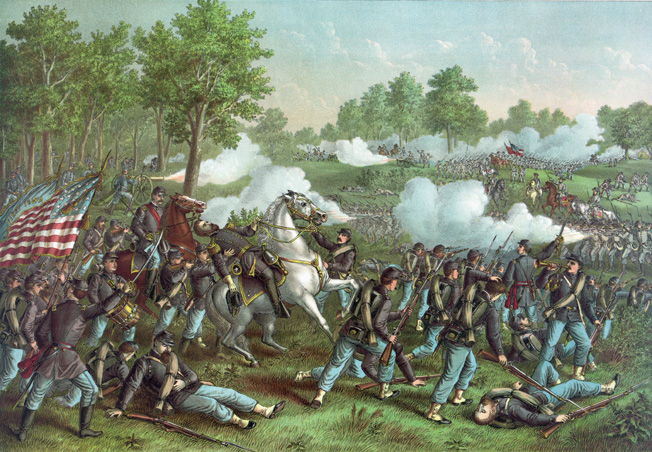
Back on Bloody Hill, Lyon remained ignorant of the events on Sigel’s front. It was 10 AM, and most of the Federal soldiers were in line trading scattered volleys with Price’s Guard while the ineffectual artillery duel raged on. Lyon’s confidence was dwindling. Grazed by one bullet on the side of the head and struck painfully in the calf by another, he was left limping awkwardly to the rear after a third bullet killed his horse. “I am afraid the day is lost,” he moaned to his chief of staff, Major John Schofield. “No, General, let us try once more,” Schofield responded.
Thus encouraged, Lyon determined to return to the front. With help from his staff, he mounted a replacement horse, and with blood dripping from his shoe he advanced toward the crest of the hill to lead a final desperate charge. Waving his hat, Lyon beckoned to the nearest regiment. “Come on, my brave boys!” he cried. “I will lead you! Forward!” Then a volley erupted from the underbrush ahead, a bullet piercing his heart and lungs. Lyon tried to dismount, but fell from his horse into the arms of his orderly, Private Ed Lehmann of the 1st U.S. Cavalry. “Lehmann, I am going,” Lyon murmured, then died. Lyon’s aides carried his body to the rear and placed it under a tree, pulling his coattails over his face to conceal his identity and prevent panic from spreading through the ranks. Then they sent for Sturgis, the senior officer remaining on Bloody Hill.
It took about 30 minutes to locate Sturgis. During that time, Price launched a second major attack. As with his first offensive, the effort was awkward and piecemeal, hindered by the men’s poor training and paucity of ammunition. Units advanced cautiously until they came within range of the Federal line. Then the men fell prone and hugged the scant cover of the prairie grass as they fired. All the while, Price labored to maintain alignment among the regiments, shrugging off a painful wound in the side. McCulloch strove to help with the offensive, redirecting most of his units to Bloody Hill, but few arrived in time to join the action. Ultimately, the second Confederate assault failed much as the first one had, from lack of coordination.
Another lull settled over Bloody Hill, as Lyon’s aides finally managed to locate Sturgis. Distraught over the news of Lyon’s death, the major quickly called a council of war to determine how best to proceed. Everyone felt that victory depended on Sigel’s timely arrival. No one had heard from the German, but the officers quickly adjourned in excitement after they observed a column of infantry approaching from the south. The column was actually the 3rd Arkansas, marching from reserve to reinforce the State Guard. Greeting the men with aplomb, Price cautioned: “Keep as cool as the inside of a cucumber. Take your position and hold it whatever you do. Don’t yield an inch.” Moving up alongside the Arkansans, the 3rd Louisiana joined Price’s line alongside the 5th Arkansas. McCulloch had finally achieved his grand concentration. The stage was set for one final effort.
“We were Glad to See Them Go”
Up and down the line, weary members of the Missouri State Guard joined McCulloch’s volunteers in charging up Bloody Hill. Clouds of smoke obscured the landscape, and men fell in scores. At one point, members of the Guard advanced to within 20 feet of Totten’s guns before point-blank blasts of canister sent them reeling. Sturgis pulled part of the 1st Iowa from the line and sent it in a feverish counterattack to plug a hole after another hard-pressed unit buckled. Try as they might, the men of Price’s and McCulloch’s commands were unable to break the Union line. “Some of the best blood in the land was being spilled as recklessly as if it were ditch water,” one survivor lamented.
At this juncture, realizing that Sigel was not coming to the rescue and learning that several of his units were running low on ammunition, Sturgis decided to disengage and withdraw to Springfield. Aided by a lull in the fighting as McCulloch’s and Price’s men fell back in exhaustion, the Federal soldiers were able to retreat in good order, pulling out all of their artillery pieces and many of their wounded, although they accidentally left Lyon’s body behind. It took Price and McCulloch a surprisingly long time to learn that the enemy had gone. Upon reaching the top of Bloody Hill, one Arkansas officer recalled watching the retreating column. “We were glad to see them go.”
A Win for Both Sides?
In their wake, the Federal forces left the devastation of what had been a surprisingly bloody contest. Combined casualties numbered over 2,500, and the medical officers of both armies were woefully unprepared for the task they faced. Soon after Sturgis reached Springfield, the wounded from his regiments overflowed public buildings, and surgeons began requisitioning private homes. Days later, one wounded man in Springfield observed that “the stench from the dead and dying was so offensive as to be almost intolerable.”
The Union officers convened another council of war in Springfield and unanimously agreed that the best course of action was to fall back on Rolla—precisely the plan that Frémont had advocated in the first place. Sturgis abdicated command to Sigel at this point, and Sigel showed such favoritism to his fellow Germans on the retreat that he almost provoked a mutiny within the ranks.
With the crisis past, Price and McCulloch immediately set to squabbling again. Price urged a follow-up advance, but McCulloch, acutely aware of supply shortages, demurred. In the coming days, their mutual antipathy deepened, and they ultimately went their separate ways, diffusing any strength they might have enjoyed through concentration. Newspapers of both sides claimed success at Wilson’s Creek. “Never has a greater victory crowned the efforts of the friends of Liberty and Equal Rights,” crowed the pro-Confederate Liberty Tribune. “The victory of the Union force was brilliant and overwhelming,” retorted the Topeka, Kansas State Record.
Aside from the casualties, the immediate effect of Wilson’s Creek was negligible. Both sides pulled back, and the strategic picture remained unchanged. But the larger results of Lyon’s campaign through Missouri had far-reaching consequences. In two months’ time, the scrappy New Englander had secured most of the state for Union arms, but the aggressiveness of his conquest left the countryside in a state of continual unrest. Bloody partisan confrontations would erupt in the coming months, and savage guerrilla fighting would persist throughout the war and beyond, giving birth to such experienced gunmen as Frank and Jesse James and their cousin and train-robbing henchman, Cole Younger.

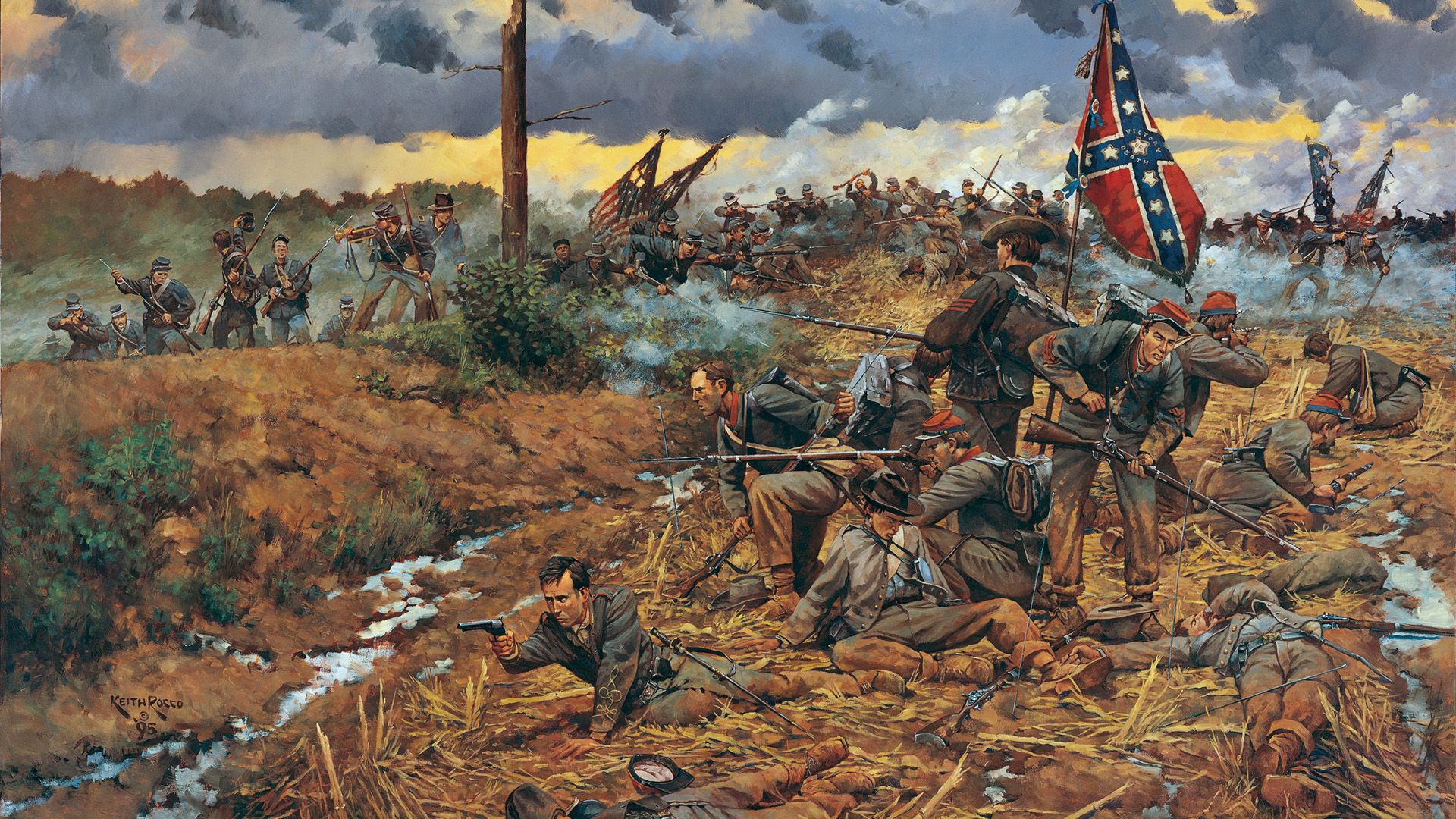
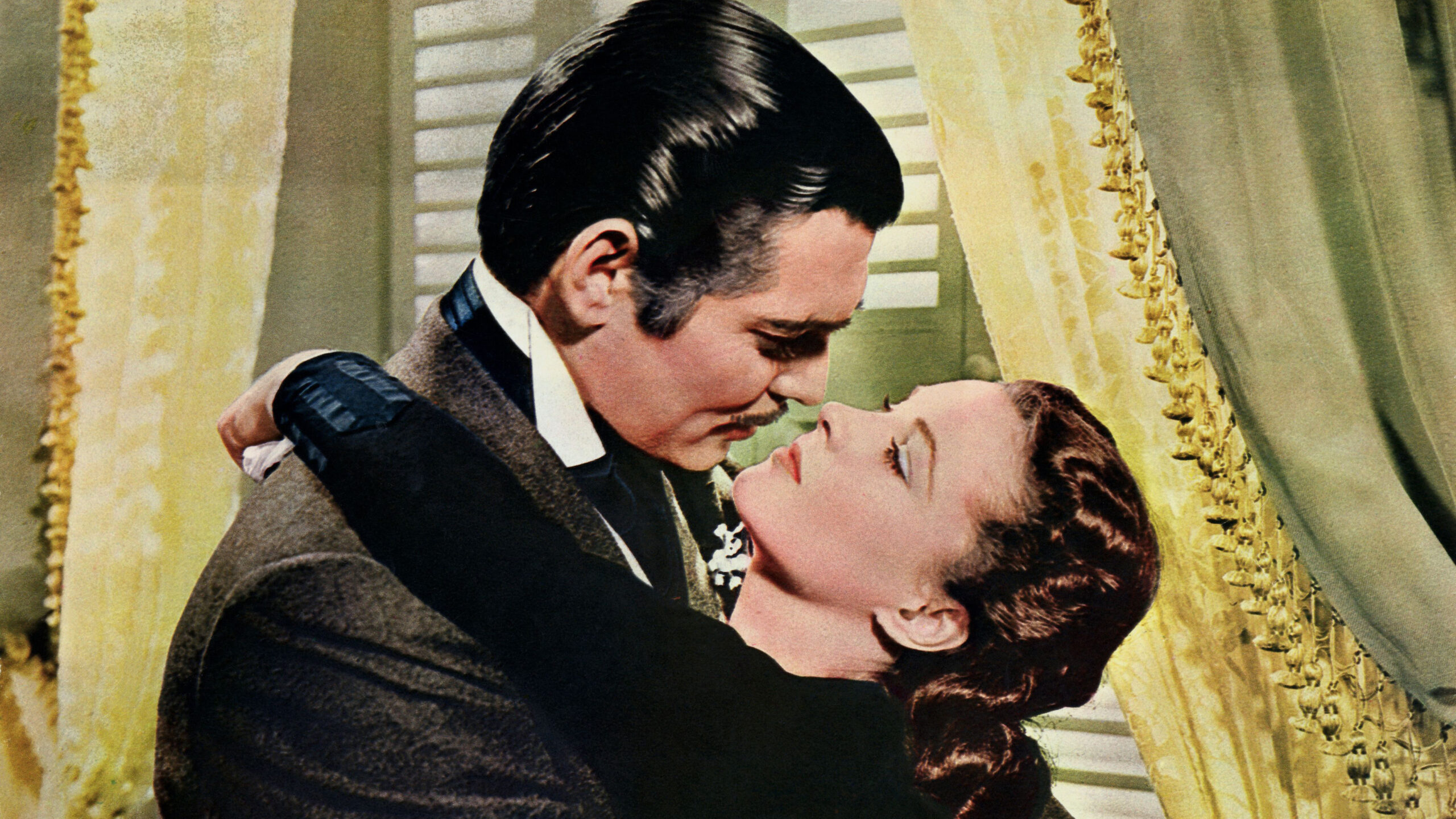
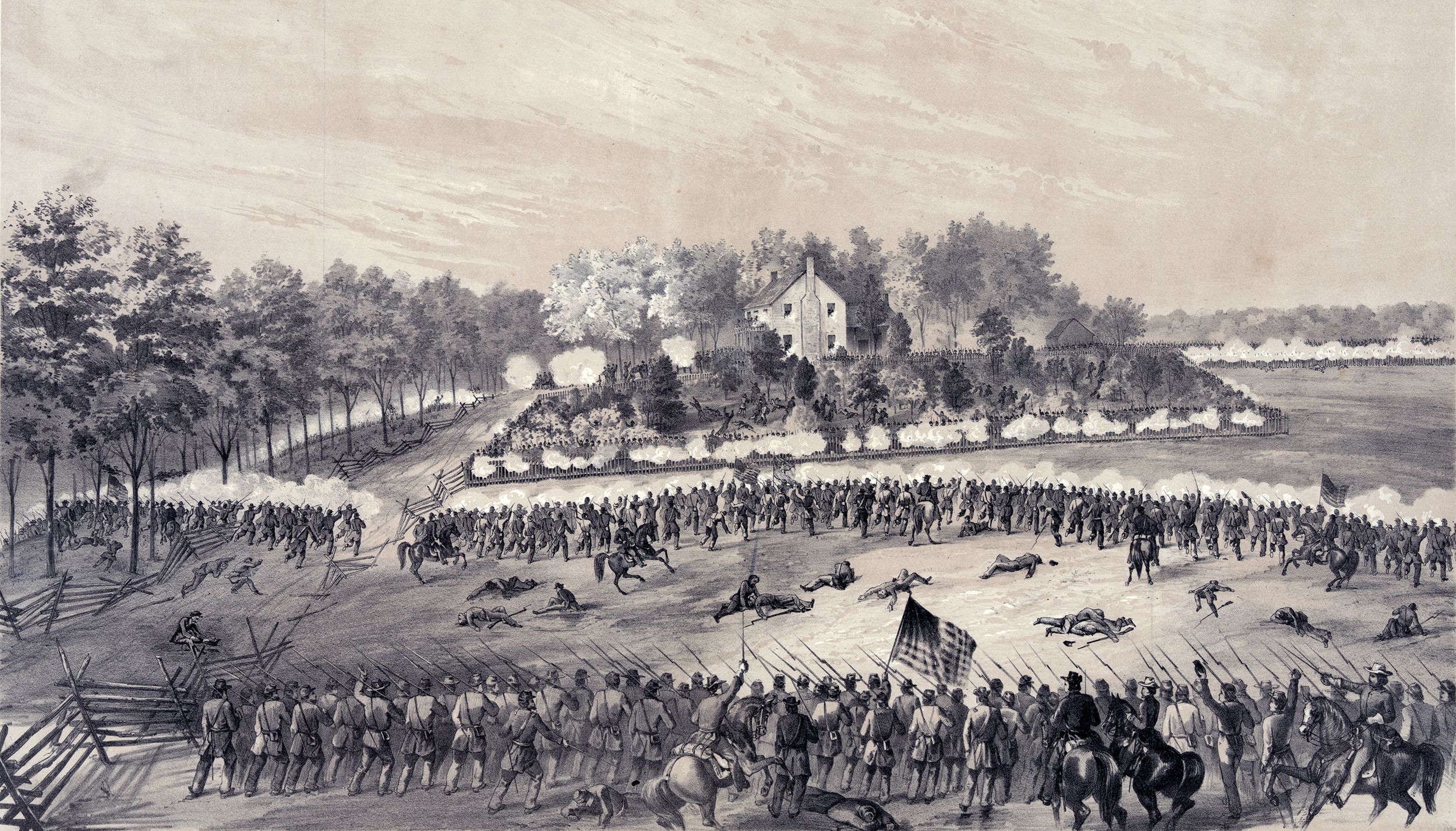
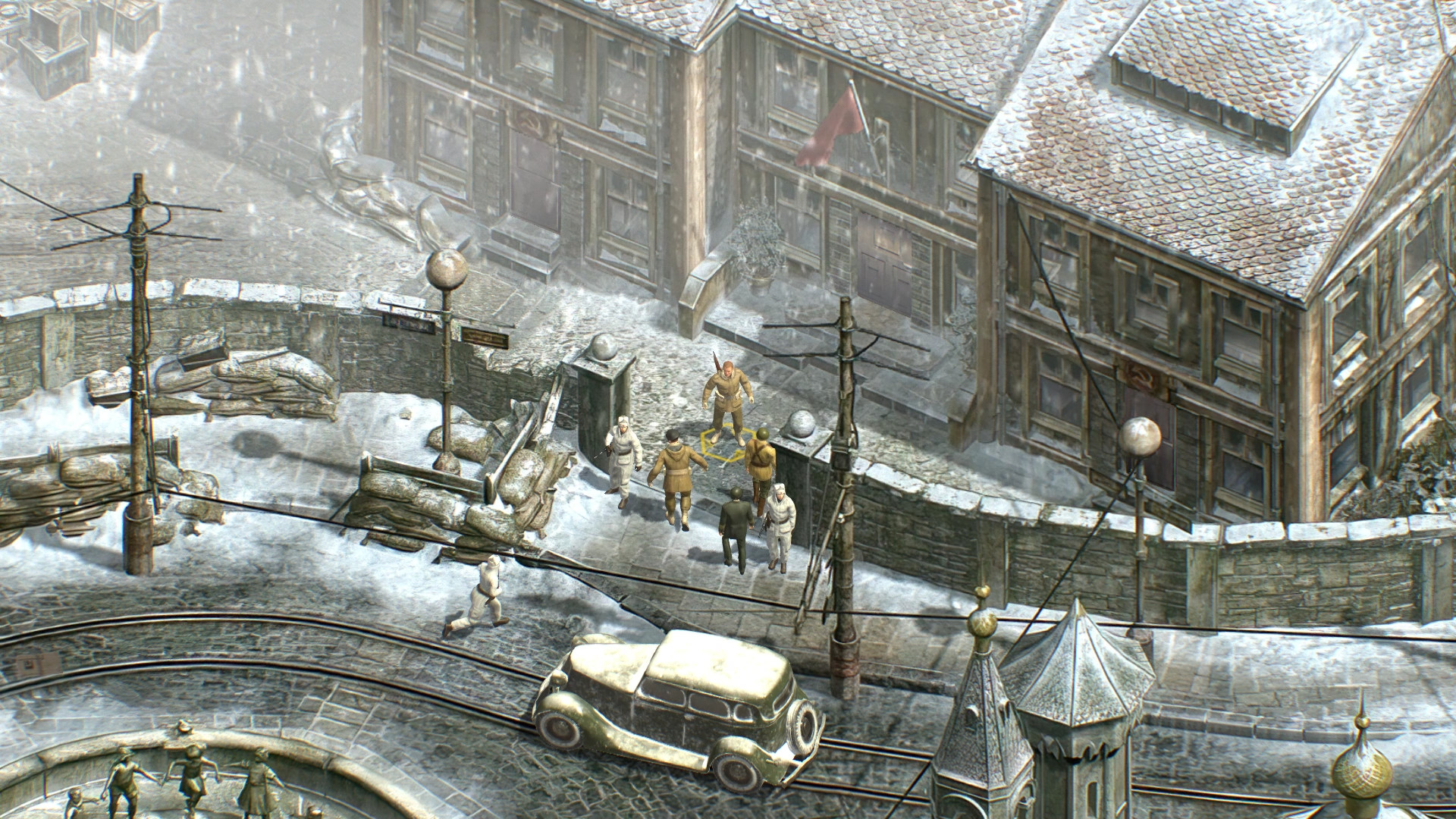
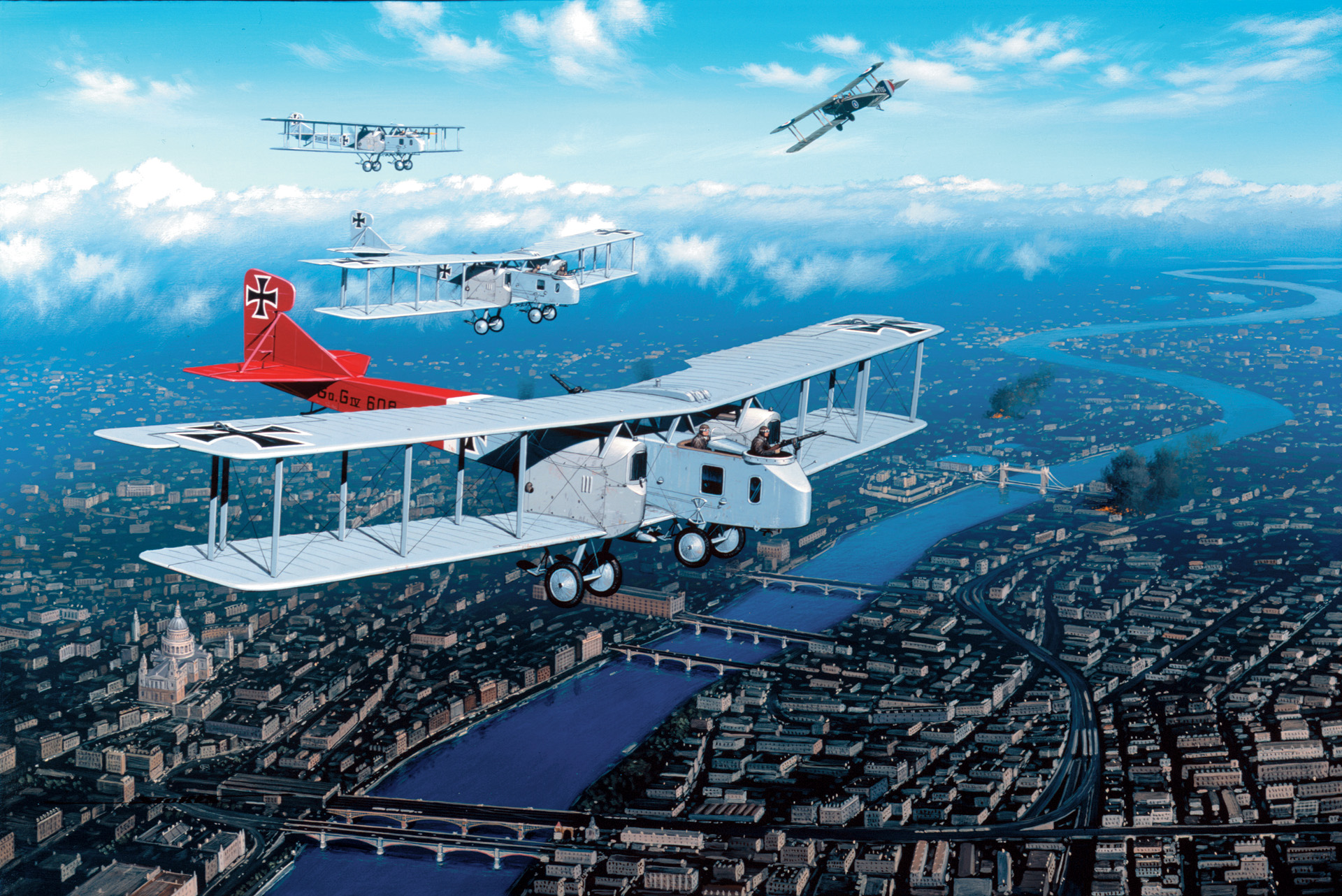
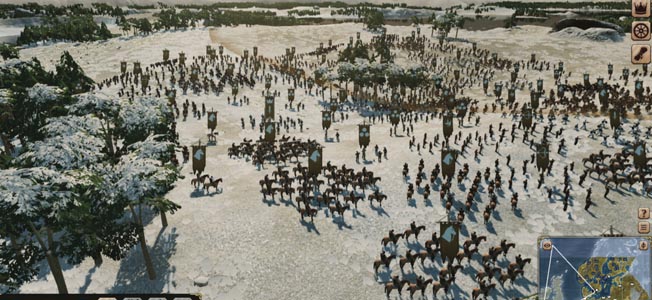
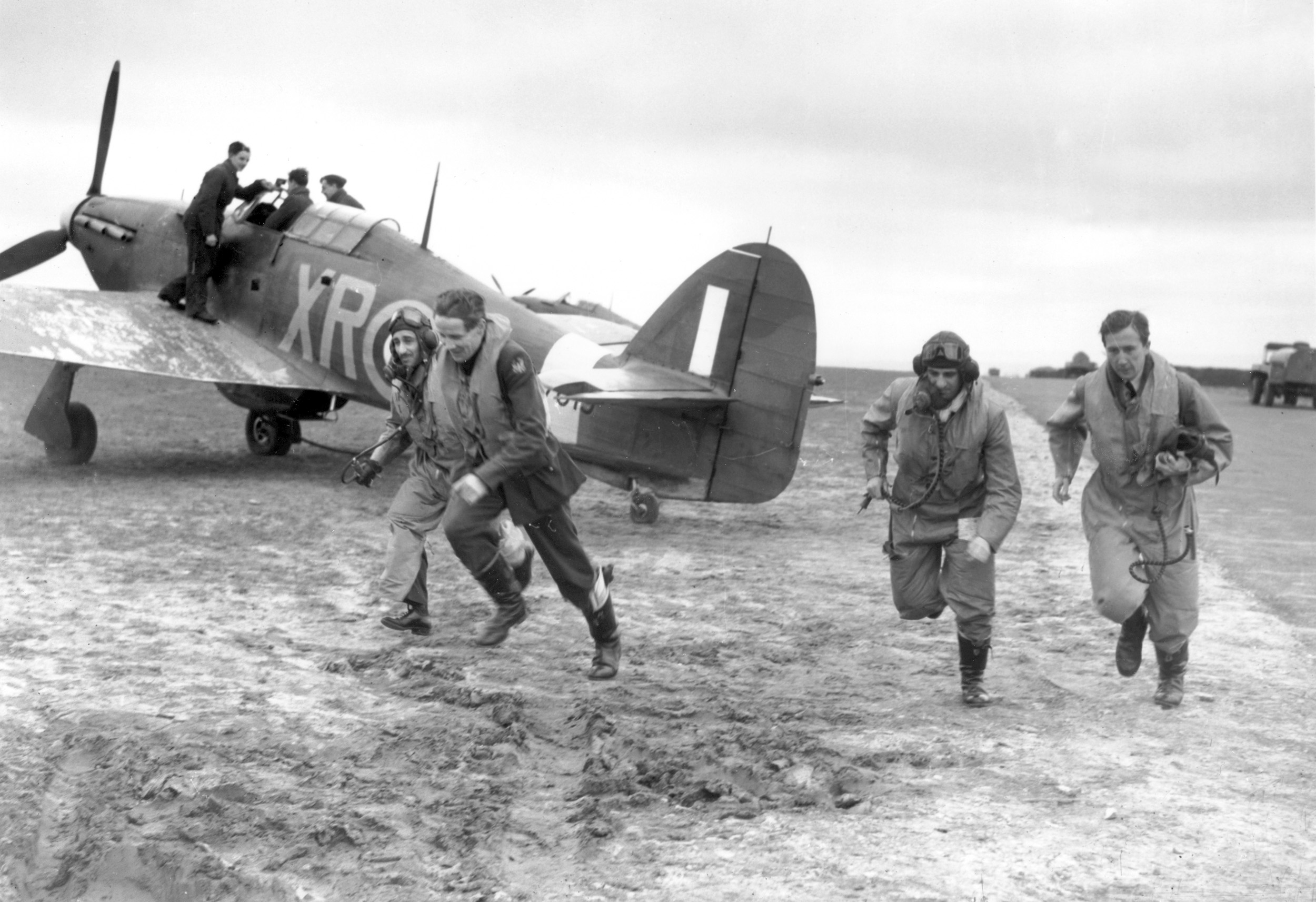
Join The Conversation
Comments
View All Comments